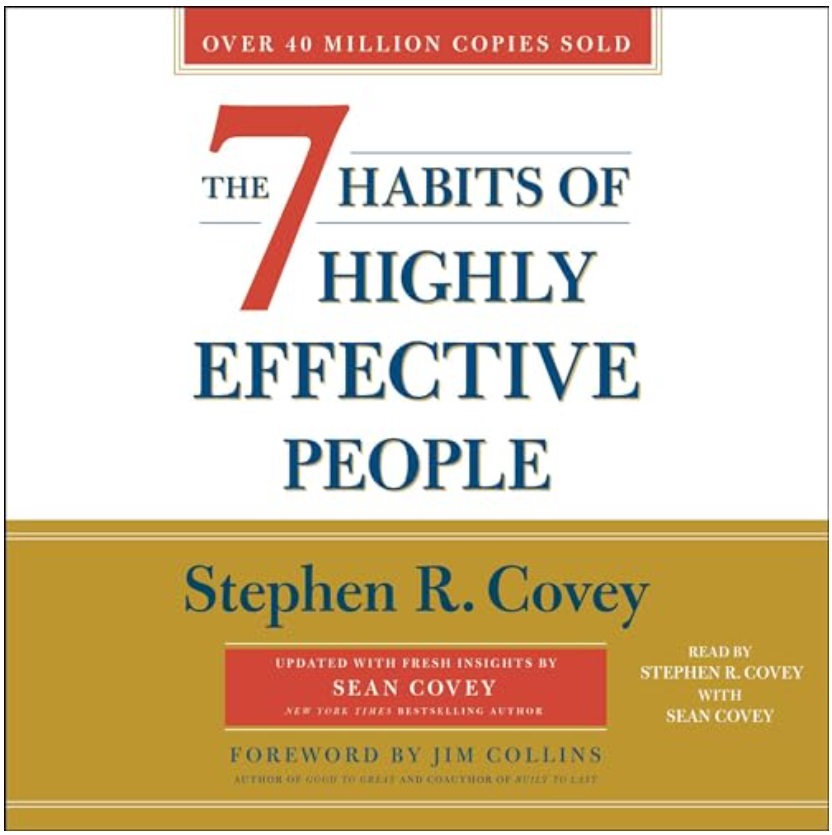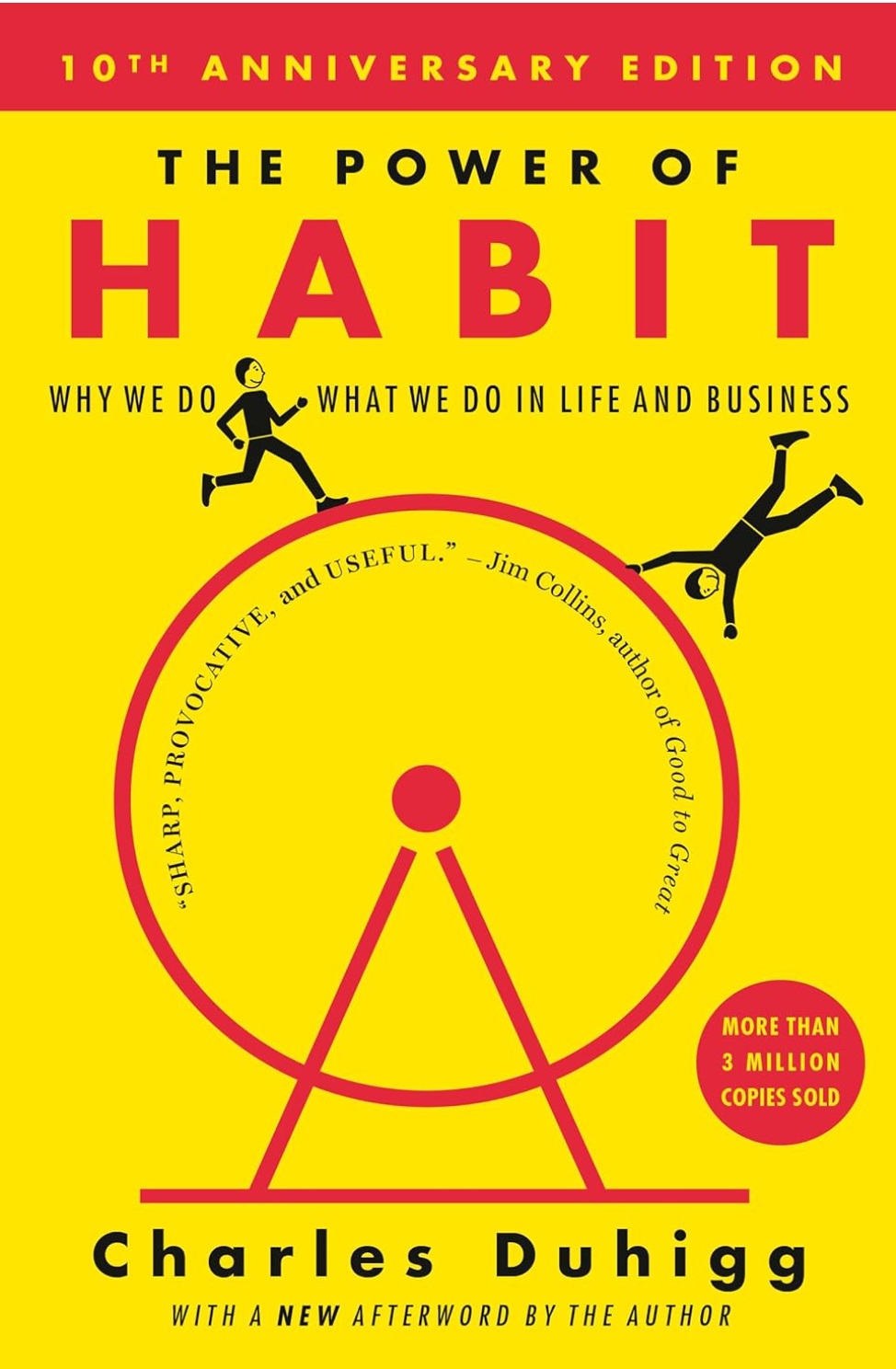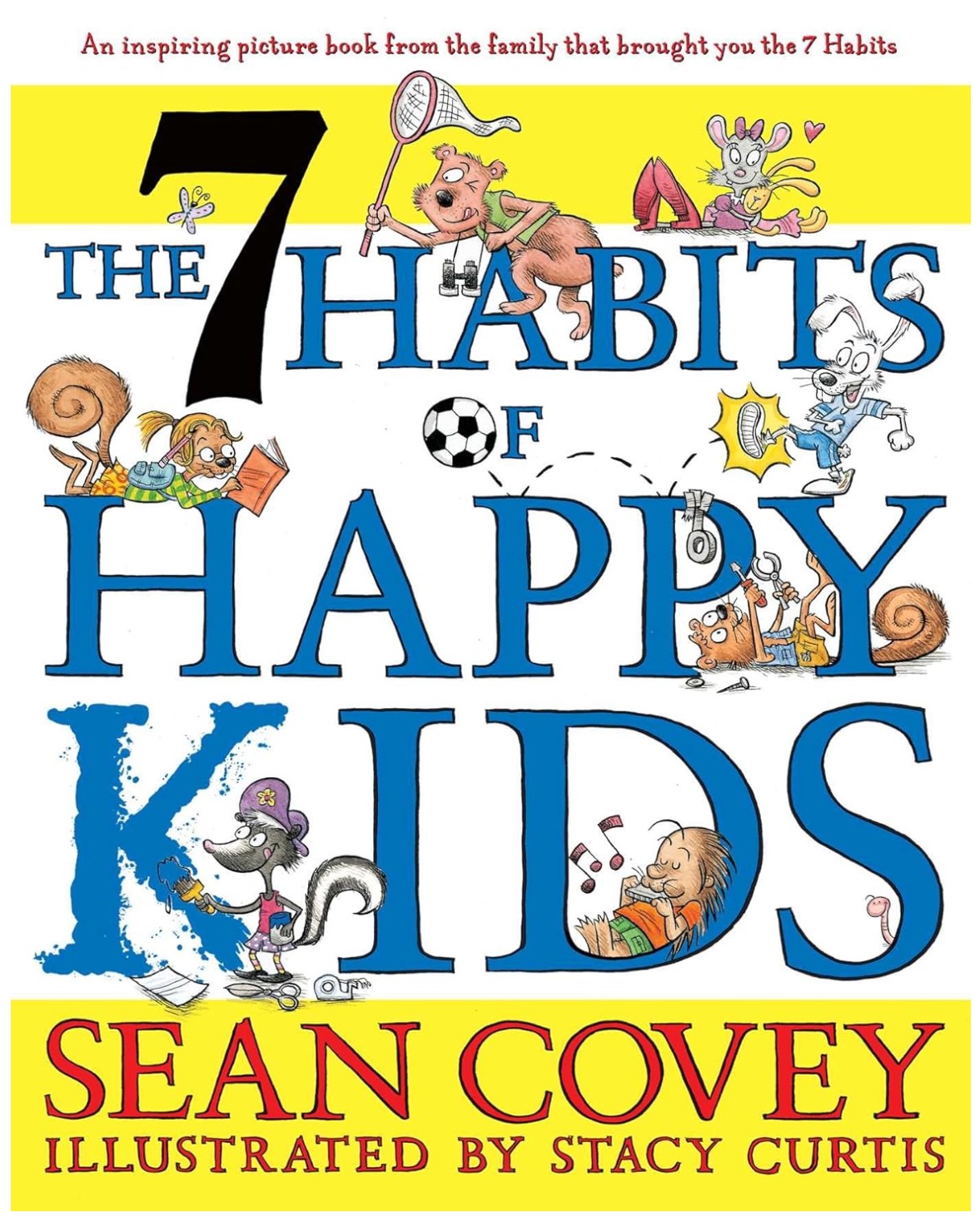Feeling overwhelmed, scattered, or constantly behind on your to-do list? Getting Things Done by David Allen offers a refreshingly calm, clear, and proven system to organize your tasks, manage your energy, and free up mental space.
Instead of relying on memory or juggling everything in your head, GTD teaches you how to capture, clarify, and execute your commitments with confidence. With its step-by-step method, you’ll learn how to prioritize effectively and reduce stress, not just get more done. This book gives you the tools to take back control, one action at a time.
Table of Contents
ToggleIntroduction to the Book
Have you ever had that nagging feeling that something important is slipping through the cracks? Or maybe your to-do list has turned into a source of stress instead of a tool for clarity? That’s exactly where David Allen’s Getting Things Done comes in. It’s not just a book about getting more done, it’s a philosophy, a system, and, if I’m being honest, a bit of a lifestyle change.
Getting Things Done, often affectionately shortened to GTD, is one of those productivity books that sits on the shelf like a wise older sibling. It’s been around since 2001, and yet it still feels relevant, maybe even more so today in our hyper-connected, constantly pinging world. This book isn’t about hustle culture or waking up at 5 a.m. It’s about peace of mind, clear systems, and what Allen calls “mind like water,” a state of being calm, clear, and ready for action.
I picked up GTD for the first time when I felt overwhelmed. Projects, deadlines, sticky notes everywhere, and a million browser tabs open. Allen didn’t just help me organize my tasks, he helped me rethink how I think about productivity altogether. If you’ve ever felt like your brain is your inbox, GTD might just change your life.
Essence Of The Book
At its heart, Getting Things Done is about creating a reliable external system for managing commitments, so your mind is free to focus on the present. David Allen believes that our brains are terrible at storing and reminding us of tasks. Instead, they’re made for thinking creatively and making decisions. The GTD system aims to offload all mental clutter into a trusted system.
The process begins with capturing everything, every task, idea, appointment, or obligation that’s floating around in your head. Then, you clarify what each item means and decide what to do with it. Is it actionable? Can it be done in two minutes? Does it need to be deferred or delegated? From there, you organize it into the right buckets, projects, calendars, next actions, and reference materials.
What makes GTD powerful is its emphasis on regular review. It’s not just about setting up a system once and forgetting it. You’re encouraged to revisit your lists weekly, reflect on what’s important, and keep the system fluid and current. It’s a cycle, not a one-time setup. This approach helps you stay aligned with your goals while also staying grounded in what’s actionable today.
My Compressed Summary Of The Book
Allen starts with a clear premise: your mind is for having ideas, not holding them. That idea alone is freeing. Instead of trying to remember every single thing, GTD encourages you to build a system that captures everything, whether it’s “buy milk” or “write proposal”, so nothing gets lost in mental traffic.
The method unfolds in five key steps: Capture, Clarify, Organize, Reflect, and Engage. First, you capture everything in an “inbox”, physical or digital. Then you clarify what each item actually means (Is it actionable? What’s the next step?). You organize those next steps by context or project. Then comes the weekly review, where you reflect, adjust, and clean your system. Finally, you engage, decide what to do based on context, time available, and energy level.
Allen doesn’t prescribe any specific tools. You can use apps, notebooks, or a corkboard and index cards. It’s about the process, not the platform. What matters most is having a system you trust. When that trust is built, your brain relaxes. You’re not carrying 100 open loops. You’re simply choosing the next right action from a clean list.
Chapter by Chapter Quick Overview
Part 1: The Art of Getting Things Done
Chapter 1 – A New Practice for a New Reality
Allen introduces the core idea: our world is more complex than ever, and traditional ways of staying organized don’t work anymore. He lays the foundation for why we need a system like GTD, one that brings clarity and calm to our overloaded minds.
Chapter 2 – Getting Control of Your Life: The Five Stages of Mastering Workflow
This chapter breaks down the GTD method into five stages: Capture, Clarify, Organize, Reflect, and Engage. Allen explains why each step matters and how they work together to give you a “mind like water”—calm, responsive, and stress-free.
Chapter 3 – Getting Projects Creatively Under Way: The Five Phases of Project Planning
Here, Allen introduces a natural planning model for bigger goals. He outlines how to think through projects using five steps: defining purpose, envisioning outcomes, brainstorming, organizing ideas, and identifying next actions.
Part 2: Practicing Stress-Free Productivity
Chapter 4 – Getting Started: Setting Up the Time, Space, and Tools
Ready to implement? This chapter is all about logistics. Allen guides you through setting up your physical and digital workspace, organizing inboxes, and selecting tools to support your new system.
Chapter 5 – Collection: Corralling Your “Stuff”
This is where the real work begins. You gather everything that’s on your mind—emails, to-dos, notes, obligations—and dump it into an external system. The goal: get it out of your head and into a trusted place.
Chapter 6 – Processing: Getting “In” to Empty
Now that you’ve collected your stuff, it’s time to clarify what it all means. Allen shows you how to decide what’s actionable, what’s not, and where each item belongs in your workflow.
Chapter 7 – Organizing: Setting Up the Right Buckets
This chapter explains the backbone of the GTD system. You learn how to sort tasks into actionable lists (like “Next Actions,” “Projects,” “Waiting For,” and “Someday/Maybe”) so nothing gets lost or forgotten.
Chapter 8 – Reviewing: Keeping Your System Functional
The Weekly Review is key. Allen teaches you how to step back, assess your system, update your lists, and realign with your priorities regularly so you stay on top of everything.
Chapter 9 – Doing: Making the Best Action Choices
Here, you learn how to choose what to do in any given moment using four criteria: context, time available, energy level, and priority. This is where GTD becomes a decision-making tool, not just an organizational one.
Chapter 10 – Getting Projects Under Control
Allen circles back to managing multiple projects and priorities. He helps you apply the GTD method to complex situations without getting overwhelmed, by focusing on next actions and desired outcomes.
Part 3: The Power of the Key Principles
Chapter 11 – The Power of the Collection Habit
This chapter emphasizes why constantly capturing thoughts and tasks keeps your mind clear and focused. It’s a habit that, once built, keeps your system—and your life—running smoothly.
Chapter 12 – The Power of the Next-Action Decision
Allen dives deep into the deceptively simple idea of “What’s the next action?” Mastering this single question helps you move any project forward and defeat procrastination.
Chapter 13 – The Power of Outcome Focusing
Finally, Allen talks about using desired outcomes to fuel motivation. When you visualize success clearly, your brain gets on board, and action becomes easier and more aligned.
Writing Style & Flow
Reading Getting Things Done is like getting advice from a calm, meticulous mentor. David Allen’s tone is professional but never condescending. He’s got the calm of a meditation teacher, mixed with the structure of an efficiency consultant. There’s a sense that he’s been in the trenches, managing projects, navigating corporate chaos, and what he’s offering is not theory, but battle-tested advice.
The writing style leans instructional, but it’s not dry. It’s methodical. Allen walks you through each principle step-by-step, and while it can feel technical at times, he balances it with reflections on stress, creativity, and clarity. The book is structured logically, with concepts building on each other. You could read it in a few sittings, but many people (myself included) treat it like a manual, revisiting parts as needed.
I’ll be honest, some sections can feel a bit repetitive, especially if you’re already productivity-savvy. But I found that repetition helpful. The truth is, implementing GTD is like learning a language. The more you hear the concepts, the more they start to sink in. By the time I finished the book, I wasn’t just reading about the system, I was mentally rehearsing how to apply it to my life.
Key Strengths & Weaknesses
Strengths
One of the biggest strengths of GTD is its universality. It doesn’t matter if you’re a CEO, a student, a freelancer, or a stay-at-home parent, the system can be adapted to fit your life. Allen gives examples from all walks of life, and the method is as relevant in the boardroom as it is in your kitchen.
Another major strength is how GTD separates “thinking” from “doing.” This distinction alone was a game-changer for me. So often, we look at a to-do list and feel overwhelmed because we haven’t broken tasks down into actionable steps. GTD forces you to define the very next action, and that tiny shift makes big things feel manageable.
Finally, the concept of the “Weekly Review” is a gift. It’s like a reset button for your brain and your systems. I now block out time each Friday to review my projects, clean up my lists, and plan the week ahead. It’s one of the most grounding habits I’ve ever built.
Weaknesses
That said, the system can feel overwhelming at first. There are a lot of moving parts, contexts, projects, reference systems, someday/maybe lists, and if you try to implement everything at once, you might burn out. I definitely tried to do too much too fast on my first attempt.
Also, some of the examples and technology references are a bit outdated. The book was first written in the early 2000s, and while it’s been revised, you’ll still find mentions of PalmPilots and filing cabinets. That might feel a little quaint in our current world of Notion, Google Tasks, and AI calendars.
Lastly, while GTD is great at managing what’s on your plate, it doesn’t spend much time helping you decide what should be on your plate. There’s not a lot of talk about values or long-term vision. It’s about execution, not necessarily direction. For that, you might want to pair it with another book like Essentialism by Greg McKeown.
Who This Book Is For
This book is for anyone who feels mentally cluttered. If your brain feels like a browser with 50 tabs open, GTD will give you a roadmap to peace. It’s perfect for knowledge workers, entrepreneurs, creatives, and even students, anyone managing multiple projects or responsibilities.
It’s also for people who love systems. If you find joy in organizing your pantry or color-coding your calendar, you’ll geek out over GTD. That said, even if you’re not a naturally organized person (and I wasn’t!), the system is forgiving. You don’t have to do it perfectly to see results.
And if you’re someone who’s tried every productivity hack under the sun and still feels overwhelmed, GTD might be the reset you need. It doesn’t offer hacks, it offers clarity. And sometimes, that’s all we really need.
What Reviews Thought
Amazon Reviewers
Amazon reviews for GTD are overwhelmingly positive. Readers praise the book’s ability to create calm in the chaos. One reviewer wrote, “This book helped me sleep again. I no longer lie awake thinking of everything I forgot to do.” Another said, “It’s the only productivity system I’ve ever stuck with.”
Some negative reviews point out that the book feels overly structured or complex for people who prefer flexible systems. A few said it took too long to implement, and that they had to simplify it to make it work. Others didn’t appreciate the corporate tone of some sections.
Goodreads Reviewers
Goodreads readers echo the Amazon crowd: GTD is widely respected as a classic. It has that reputation of being the book that finally helped people take control of their time. Many reviewers said they reread it annually to refresh their systems.
Criticism on Goodreads is usually about accessibility. Some readers found the framework too rigid, or said it created anxiety at first before eventually reducing it. But even the critiques often came with a caveat like, “It works, but only if you stick with it.”
My Opinion On the Book's Shortcomings
Personally, I struggled with the initial setup. There’s a learning curve to GTD, and if you’re already overwhelmed, trying to organize everything can feel… well, more overwhelming. I had to remind myself that the goal wasn’t perfection, but progress.
I also wished the book gave a bit more guidance on how to prioritize. GTD helps you manage everything, but it doesn’t always help you see what matters most. That’s where I had to bring in some outside tools like values clarification and goal planning.
Still, despite these hiccups, I found the system incredibly grounding. And even when I fall off the GTD wagon, as I often do, I know exactly how to get back on. That’s the beauty of a system that’s based on principles, not just tips.
My Thoughts on Applying This Book's Ideas
Implementing GTD changed how I think about productivity. It’s no longer about cramming more into my day, it’s about feeling calm and clear. I now keep a master list of all my projects, break each one down into next actions, and check in with myself weekly. It’s not just a system, it’s a self-care practice.
One of the most surprising changes? I have more creative energy. With fewer mental tabs open, I’ve been able to focus more deeply, write more consistently, and even enjoy downtime without guilt. That might sound dramatic, but it’s true.
If you’re thinking about trying GTD, my advice is to start small. Capture your thoughts. Clarify your tasks. Review once a week. Let the system evolve naturally. You don’t have to master it all at once, you just have to begin.
Comparison to Books on Similar Topics
Compared to books like The 7 Habits of Highly Effective People or Atomic Habits, GTD is more system-focused and less mindset-focused. While 7 Habits teaches values and Atomic Habits teaches behavior change, GTD is the engine room, it’s the how-to manual once you know where you’re headed.
It also complements Deep Work by Cal Newport beautifully. If Newport helps you understand the importance of focused work, Allen gives you the system to make it happen. Together, they form a kind of one-two punch for modern knowledge workers.
If you need clarity and structure, GTD is unmatched. It’s not about working harder, it’s about working sanely.
Final Verdict
Getting Things Done is not just a book, it’s a trusted productivity system that can change the way you live and work. It doesn’t promise quick fixes or flashy hacks. Instead, it offers a deep and lasting approach to managing your tasks, your energy, and your attention.
This book will challenge you, especially in the beginning. But if you stick with it, even just parts of it, you’ll experience something rare in the productivity world: peace. That “mind like water” state that Allen talks about? It’s real. And it’s worth the effort.
If you’re ready to stop spinning your wheels and start moving forward with calm focus, GTD is a must-read.



































